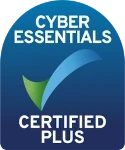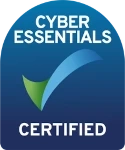15
+
YEARS OF
EXPERIENCE
1000
+
SUCCESSFUL
Projects
80
+
Satisfied
Clients

Introduction to Entra ID Security Best Practices
In today’s rapidly evolving digital landscape, safeguarding sensitive information and ensuring secure access to resources is paramount. Microsoft Entra ID, a powerful identity and access management (IAM) solution, offers robust tools and features to bolster your organization’s security posture. By implementing Entra ID Security Best Practices, you can significantly reduce the risk of unauthorized access, data breaches, and other cyber threats.
The Importance of Strong Password Policies
A cornerstone of Entra ID Security Best Practices is establishing and enforcing stringent password policies. By implementing the following measures, you can significantly enhance the security of your Entra ID environment:
- Passwordless Authentication: Consider transitioning to passwordless authentication methods, such as biometric authentication or security keys, to eliminate the risk of password-related attacks.
- Password Complexity: Enforce complex password requirements, including a combination of uppercase and lowercase letters, numbers, and special characters.
- Password Expiration: Set regular password expiration intervals to compel users to update their passwords periodically.
- Password Reuse Prevention: Prohibit the reuse of old passwords to minimize the risk of password compromise.
- Password Strength Meter: Utilize a password strength meter to guide users in creating strong, unique passwords.







Enabling Multi-Factor Authentication (MFA)
Multi-Factor Authentication (MFA) adds an extra layer of security by requiring users to provide 1 two or more forms of verification before gaining access to resources. By incorporating MFA into your Entra ID Security Best Practices, you can effectively deter unauthorized access attempts:
- MFA Methods: Offer a variety of MFA methods, including SMS, email, phone calls, and time-based one-time passwords (TOTP) apps.
- MFA for Privileged Accounts: Enforce MFA for all privileged accounts to protect sensitive administrative privileges.
- Risk-Based MFA: Implement risk-based MFA to adapt authentication requirements based on factors like IP address, device type, and user behavior.
Managed Service Provider
Our modern approach to technology and strict security measures, Proxar is a leading Managed Service Provider in the UK with clients mostly around LondonDigital Transformation Services
Unlock growth with our Digital Transformation Services—streamline operations, enhance efficiency, and drive innovation in your business.IT Infrastructure Services
Private Cloud, Public Cloud or on-prem infrastructures require management, monitoring and security services which we provide to the best standardsIT Support Services
Professional and reliable IT Support Services for businesses, cloud, users and infrastructures across the UKCyber Security Services
Cyber security services are professional services that help organizations protect their networks and data from cyber-attacksIT Outsourcing Services
For large size business IT Outsourcing is useful for implementing new technologies while small and medium size businesses outsource entire ITNetworking and Connectivity
We specialize in delivering top-tier networking and connectivity solutions tailored to meet the distinct needs of businesses across various industries.Linux Services
We offers comprehensive Linux services, ensuring security, efficiency, reliability, and expert support for businesses in the UK.
Leveraging Role-Based Access Control (RBAC)
Role-Based Access Control (RBAC) is a fundamental security principle that grants users access to resources based on their assigned roles and permissions. By effectively implementing RBAC, you can establish granular control over access to your organization’s resources:
- Just-in-Time (JIT) Access: Grant temporary access to privileged roles only when necessary, minimizing the exposure window.
- Least Privilege Principle: Assign users the minimum level of access required to perform their job functions.
- Regular Access Reviews: Conduct regular access reviews to ensure that user permissions remain aligned with their current roles and responsibilities.
Implementing Advanced Security Features
Microsoft Entra ID offers a suite of advanced security features that can further enhance your organization’s security posture. Consider the following Entra ID Security Best Practices to maximize the protection of your resources:
- Conditional Access: Define granular access policies based on user identity, device health, location, and other factors.
- Identity Protection: Utilize Identity Protection to detect and respond to potential security risks, such as compromised accounts and suspicious sign-in activity.
- Azure AD Privileged Identity Management (PIM): Manage and control privileged access with PIM, ensuring that privileged roles are assigned and used responsibly.
- Azure AD Identity Governance: Automate identity lifecycle management tasks, such as user provisioning, de-provisioning, and access reviews.
A Comprehensive Approach to Entra ID Security Best Practices
By diligently implementing the Entra ID Security Best Practices outlined in this post, you can significantly strengthen your organization’s security posture and protect your valuable assets. Remember that security is an ongoing journey, and it’s essential to stay updated on the latest threats and vulnerabilities. By continuously evaluating and refining your security practices, you can effectively safeguard your organization’s digital future.
As a result of increasing number of business expanding to the UAE market we are offering services of Entra ID Security Best Practices in Dubai.

answer time
satisfaction
score
on initial call
same business
day









